There is a lifestyle caused epidemic across the US! Over 40 million adults have acquired chronic diseases attributed to a sedentary lifestyle. So, what is the solution? GET MOVING! We all know that exercise is good for you, but the biggest question is: what kind, how much, and for how long? The answer: aerobic, flexibility and resistance exercises!
Aerobic exercises ultimately mean increasing your heart rate to about 100-120 beats per minute by any means necessary: running, walking, swimming, dancing…whatever you can think of and enjoy doing. There are over 1,000 cited research articles that state this moderate activity should be performed for at least 30 minutes EVERY DAY. This is where frequency is the upmost important. Research shows frequency trumps duration and intensity when it comes to reducing risk of chronic disease. This means getting a 2-hour workout twice a week is much less effective than getting a short 30-minute workout every day.
Flexibility movements include anything to elongate and stretch (not strain) tight muscles. Just make sure to hold each position for at least 30 seconds to be effective. Some examples include forward toe touches, hip extensions, touching your shoulder blade behind your head, or even putting your neck through full ranges of motion (flexion, extension, side bending, and rotations).
Resistance training means any type of movement against some type of force: weights, body weight, or elastic bands. Although sets and reps vary depending on each individual’s need, the most effective shown in research is 3 sets of 8-12 reps. This is where your doctors at Thrive can tailor your progression in resistance training with a thorough evaluation and development of target goals. We look at which individual muscles must be trained, injury prevention techniques, and metabolic demands for your target training goals. We cater choice of exercise, order of exercise, amount of rest between sets, and the number of reps/sets for each individual need. Research also shows the highest gains are with varied variables throughout training. This means no two workouts will be completely identical. Thrive houses the one-of-a-kind Spyderwall training room where all these demands are met.
Research shows an increase in cognitive function and reaction times when implementing resistance training compared to undirected physical activity. Evidence shows all these workout habits create positive neural changes, increases muscle mass, improves metabolic and endocrine function, and reduces apoptosis (cell death). Preventing cognitive decline will therefore prevent the inability to carry out daily living tasks, impacts on social relationships and quality of life loss due to aging. Ultimately, staying moving helps you stay younger both mentally and physically. Establishing these types of lifestyle habits will give more years to your life and more life to your years!
References
Aerobic exercises ultimately mean increasing your heart rate to about 100-120 beats per minute by any means necessary: running, walking, swimming, dancing…whatever you can think of and enjoy doing. There are over 1,000 cited research articles that state this moderate activity should be performed for at least 30 minutes EVERY DAY. This is where frequency is the upmost important. Research shows frequency trumps duration and intensity when it comes to reducing risk of chronic disease. This means getting a 2-hour workout twice a week is much less effective than getting a short 30-minute workout every day.
Flexibility movements include anything to elongate and stretch (not strain) tight muscles. Just make sure to hold each position for at least 30 seconds to be effective. Some examples include forward toe touches, hip extensions, touching your shoulder blade behind your head, or even putting your neck through full ranges of motion (flexion, extension, side bending, and rotations).
Resistance training means any type of movement against some type of force: weights, body weight, or elastic bands. Although sets and reps vary depending on each individual’s need, the most effective shown in research is 3 sets of 8-12 reps. This is where your doctors at Thrive can tailor your progression in resistance training with a thorough evaluation and development of target goals. We look at which individual muscles must be trained, injury prevention techniques, and metabolic demands for your target training goals. We cater choice of exercise, order of exercise, amount of rest between sets, and the number of reps/sets for each individual need. Research also shows the highest gains are with varied variables throughout training. This means no two workouts will be completely identical. Thrive houses the one-of-a-kind Spyderwall training room where all these demands are met.
Research shows an increase in cognitive function and reaction times when implementing resistance training compared to undirected physical activity. Evidence shows all these workout habits create positive neural changes, increases muscle mass, improves metabolic and endocrine function, and reduces apoptosis (cell death). Preventing cognitive decline will therefore prevent the inability to carry out daily living tasks, impacts on social relationships and quality of life loss due to aging. Ultimately, staying moving helps you stay younger both mentally and physically. Establishing these types of lifestyle habits will give more years to your life and more life to your years!
References
- Blair SN, LaMonte MJ, Nichman MZ. The evolution of physical activity recommendations: how much is enough? Am J Clin Nutr. 2004;79:913S-20S.
- Brandon LJ, Gaasch DA, Boyette LW, Lloyd AM. Effects of long-term resistance training on mobility and strength in older adults with diabetes. J Gastroenterol. 2003; 58A(8)740-5.
- Kraemer WJ, Ratamess NA. Fundamentals of resistance training: progression and exercise prescription. Med Sci Sports Exerc. 2004;36(4):674-688.
- Ponce-Bravo H, Ponce C, Feriche B, Padial P. Influence of two different exercise programs on physical fitness and cognitive performance in active older adults: functional resistance-band exercises vs recreational oriented exercises. J Sports Sci Med. 2015;14(online)716-22.
- Tibana RA, Franco OL, Cunha GV, Sousa NM, Sousa Neto IV, Carvalho MM. The effects of resistance training volume on skeletal muscle proteome. Int J Exerc Sci. 2017; 10(7)1051-66.

 RSS Feed
RSS Feed
